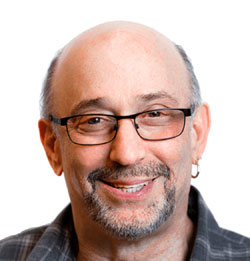LSA Signature 50 Loudspeakers by Terry London

 I want to start this review with two statements that will clarify why reviewing the LSA (Living Sound Audio) Signature 50 loudspeakers has turned out to be one of the most “mind-twisting” experiences I have had in a very long time. The first statement regards my definition of a “disruptive product,” which rarely comes along in high-end audio. The second statement will focus on why many audiophiles would reject the possibility that such a product exists, let alone outperform some of the more expensive speakers they probably already own.
I want to start this review with two statements that will clarify why reviewing the LSA (Living Sound Audio) Signature 50 loudspeakers has turned out to be one of the most “mind-twisting” experiences I have had in a very long time. The first statement regards my definition of a “disruptive product,” which rarely comes along in high-end audio. The second statement will focus on why many audiophiles would reject the possibility that such a product exists, let alone outperform some of the more expensive speakers they probably already own.
 In 2017, I was the first professional to write a review on Tekton Design’s Double Impact loudspeakers. I was shocked that Eric Alexander’s $3,000 design outperformed my reference pair of Lawrence Audio Cello speakers that retailed for $18,000. A statement that I made in that review to describe the absurdity of the cost vs. performance ratio was: “Such a component is a “disruptive product” in that it so radically snaps the ratio of cost to performance that it skews the market to the point that it would be irrational to spend a lot more money for less performance.”
In 2017, I was the first professional to write a review on Tekton Design’s Double Impact loudspeakers. I was shocked that Eric Alexander’s $3,000 design outperformed my reference pair of Lawrence Audio Cello speakers that retailed for $18,000. A statement that I made in that review to describe the absurdity of the cost vs. performance ratio was: “Such a component is a “disruptive product” in that it so radically snaps the ratio of cost to performance that it skews the market to the point that it would be irrational to spend a lot more money for less performance.”
Walter Liederman has, for over 21 years, through his direct sales business model, Underwood Hi-fi, Inc., providing high-quality audio gear for music lovers. About five years ago, Walter bought Living Sounds Audio which creates and builds high-end floor-standing and stand-mount speakers to add to his stable of remarkable products at sane prices. If you are a music lover, you will consider Mr. Liederman your best friend because with his new LSA Signature 50 speakers, which sell for $599 per pair, you can have a pair of speakers that are at least the equal of my beloved Sonus Faber Cremona M monitors regarding musicality and engaging your emotional connection with the music. The Signature 50 speakers are more transparent and detailed and have better macro-dynamics, with a more taut and extended bottom end. The Cremona M’s initially sold for over $7,500 with stands.
The Signature 50 speakers have outperformed at least three other two-way stand mount speakers ranging in price from $1,700 to $3,500 per pair that I currently have in-house for review. On the other hand, if you’re an audiophile who equates inflated pricing, big marquee brand names, and the ramblings of talking heads on YouTube and other audio forums with quality, you might irrationally blame Walter for making you feel bad that you might have wasted a lot of money on far less performance. On to the details regarding why the LSA Signature 50 speaker is a “disruptive product” in high-end audio. Every time I sit in front of them for another session of musical pleasure, I shake my head in disbelief that they only cost $599!
The LSA Signature 50 speaker is a robust, relatively large two-way design. It measures 10 inches in width, 13 inches in depth, and 15 inches in height. Each speaker weighs 23 lbs. The speaker looks very similar to the Sonus Faber Electa Amator with its walnut wood sides and slanted leather-clad front baffle, top, and bottom. They come with well-built grill covers that add to the visual aesthetics of the design. However, the 50’s sound more open and clear without the grills. Therefore, for serious listening, they were left off. Based on its very attractive physical appearance, one would believe this speaker would be a much more expensive design.
 The tweeter is a 1.1-inch silk dome, and the woofer is a 6.5-inch treated paper cone driver. The frequency response is 34.5Hz (-6db) to 22 kHz (-3dB). The sensitivity is 86dB (2.83v @ 1m). The impedance is 8 ohms nominal, making the Signature 50 an easy load for both solid-state and tube amplifiers. I experimented with both amplifiers and preferred my higher wattage SPL 1200 and Threshold 550e solid-state amplifiers because of their overall control of the speaker, especially in the power band (upper bass/lower midrange) and lowest bass frequencies. I would recommend at least a 50-watt amplifier to obtain optimum performance. Where many speaker manufacturers are rather timid at discussing what level of quality components they use in their internal crossover, Mr. Liederman proudly has pictures on his website of the Signature 50’s crossover to show that the parts are at a high level and compared to speaker designs that are much more costly. The Signature 50 speaker comes with a five-year warranty for parts and labor. I would also strongly suggest you purchase the dedicated stands that Underwood Hi-fi, Inc. sells for $199 if bought with speakers, which are very attractive and match the speakers perfectly. After you fill the four pillars on each stand with play sand, they become inert and allow the Signature 50 speakers to display their high level of transparency and tighten up the lower frequency range. One final possibility you might consider is the addition of the isolation devices Iso-Pucks manufactured by IsoAcoustics. When I inserted three of the Iso-Pucks between the Signature 50 speaker and the stand’s top plate, there was a slight but noticeable increase in transparency, the layering in the soundstage became more precise, and there was further tightening up of the lowest bass frequencies. If you purchase these devices from Underwood Hi-fi, Inc., the total cost would be $180.
The tweeter is a 1.1-inch silk dome, and the woofer is a 6.5-inch treated paper cone driver. The frequency response is 34.5Hz (-6db) to 22 kHz (-3dB). The sensitivity is 86dB (2.83v @ 1m). The impedance is 8 ohms nominal, making the Signature 50 an easy load for both solid-state and tube amplifiers. I experimented with both amplifiers and preferred my higher wattage SPL 1200 and Threshold 550e solid-state amplifiers because of their overall control of the speaker, especially in the power band (upper bass/lower midrange) and lowest bass frequencies. I would recommend at least a 50-watt amplifier to obtain optimum performance. Where many speaker manufacturers are rather timid at discussing what level of quality components they use in their internal crossover, Mr. Liederman proudly has pictures on his website of the Signature 50’s crossover to show that the parts are at a high level and compared to speaker designs that are much more costly. The Signature 50 speaker comes with a five-year warranty for parts and labor. I would also strongly suggest you purchase the dedicated stands that Underwood Hi-fi, Inc. sells for $199 if bought with speakers, which are very attractive and match the speakers perfectly. After you fill the four pillars on each stand with play sand, they become inert and allow the Signature 50 speakers to display their high level of transparency and tighten up the lower frequency range. One final possibility you might consider is the addition of the isolation devices Iso-Pucks manufactured by IsoAcoustics. When I inserted three of the Iso-Pucks between the Signature 50 speaker and the stand’s top plate, there was a slight but noticeable increase in transparency, the layering in the soundstage became more precise, and there was further tightening up of the lowest bass frequencies. If you purchase these devices from Underwood Hi-fi, Inc., the total cost would be $180.
The Signature 50 speakers were placed in my smaller upstairs loft system. Set up was relatively straightforward. The Signature 50 speakers were placed three and a half feet off the front wall, four and a half feet off the side walls, and six feet apart. To get the center image to lock in and preserve the overall tonality, which top to bottom is one of the most natural/organic presentations I have heard in a two-way design, I toed the speakers so that the tweeters were slightly on the outside of my ears.
 My first music selection was by the tenor saxophonist John Ellis and his group Double Wide, Dance like there’s No tomorrow. This very well-recorded album has variations of New Orleans funk jazz. An interesting feature of this group is the use of the rarely heard sousaphone to mainly do the bass lines instead of an acoustic double bass or an electric organ. The Signature 50 speakers easily produced the growl and power of this giant horn and pressurized my listening space with chest-popping bass notes. Like all well-designed and placed two-way monitors, the Signature 50 speakers developed a soundstage that transcended the speakers’ edges, was very realistic in its height and depth, and completely disappeared in that soundstage. The location of each group member was precise in that soundstage, and the size of the individual images was not miniaturized or blown out of proportion, sometimes with two-way stand mount monitors. The macro-dynamics and speed of the Signature 50 speakers are pretty remarkable, which leads to a sense of “aliveness” that keeps you engaged with the pulse of the music. The bottom-end extension of this speaker is deep, tonality accurate, and powerful. Because the 50s are a vented bass reflex design with a rear port, please ensure you get them off the front wall at least three feet to allow them to breathe. Otherwise, you will muddle the sound into a one-note bass boom. Unless you have a very large acoustic space or are a “bass freak,” adding a pair of subwoofers is no longer necessary. They kick downstairs on their own with great gusto!
My first music selection was by the tenor saxophonist John Ellis and his group Double Wide, Dance like there’s No tomorrow. This very well-recorded album has variations of New Orleans funk jazz. An interesting feature of this group is the use of the rarely heard sousaphone to mainly do the bass lines instead of an acoustic double bass or an electric organ. The Signature 50 speakers easily produced the growl and power of this giant horn and pressurized my listening space with chest-popping bass notes. Like all well-designed and placed two-way monitors, the Signature 50 speakers developed a soundstage that transcended the speakers’ edges, was very realistic in its height and depth, and completely disappeared in that soundstage. The location of each group member was precise in that soundstage, and the size of the individual images was not miniaturized or blown out of proportion, sometimes with two-way stand mount monitors. The macro-dynamics and speed of the Signature 50 speakers are pretty remarkable, which leads to a sense of “aliveness” that keeps you engaged with the pulse of the music. The bottom-end extension of this speaker is deep, tonality accurate, and powerful. Because the 50s are a vented bass reflex design with a rear port, please ensure you get them off the front wall at least three feet to allow them to breathe. Otherwise, you will muddle the sound into a one-note bass boom. Unless you have a very large acoustic space or are a “bass freak,” adding a pair of subwoofers is no longer necessary. They kick downstairs on their own with great gusto!
 How do the Signature 50 speakers deal with intimate music and the human voice? To answer these questions, I cued up the classic album Pop Pop by the great Rickie Lee Jones. The first sonic trait that grabbed my attention was the purity and beauty of the timbres of the acoustic instruments and Rickie Lee Jones’ unique tonality. I have heard her in concert numerous times, and the rendering of her voice by the 50s was dead on in its reproduction. Secondly, each player was rendered with “meat on the bones” three-dimensional imaging. David Was’ production and high level of quiet yet detailed recording of this album also showed off the reference level of clarity/transparency of the Signature 50 speakers because all the micro-details/nuances of the music effortlessly flowed out of the mix into my listening space. The top-end treble frequencies were very airy, shimmering, and present. However, they never became harsh or brittle, unless it’s in the recording, because of the wonderful performance of the soft dome tweeter.
How do the Signature 50 speakers deal with intimate music and the human voice? To answer these questions, I cued up the classic album Pop Pop by the great Rickie Lee Jones. The first sonic trait that grabbed my attention was the purity and beauty of the timbres of the acoustic instruments and Rickie Lee Jones’ unique tonality. I have heard her in concert numerous times, and the rendering of her voice by the 50s was dead on in its reproduction. Secondly, each player was rendered with “meat on the bones” three-dimensional imaging. David Was’ production and high level of quiet yet detailed recording of this album also showed off the reference level of clarity/transparency of the Signature 50 speakers because all the micro-details/nuances of the music effortlessly flowed out of the mix into my listening space. The top-end treble frequencies were very airy, shimmering, and present. However, they never became harsh or brittle, unless it’s in the recording, because of the wonderful performance of the soft dome tweeter.
My final selection for the reviewing process was the album, Brilliant Corners – The Music of Thelonious Monk by the Bill Holman Band. I use this recording to assess how a speaker will handle dynamic range and full-throttle peaks when the big band hits its most powerful crescendos. Even at very high dB levels on these musical peaks, the Signature 50 speakers never distorted, attenuated, or lost their effortless composure. Yes, I could finally get them to “cry uncle,” but that was at sound pressure levels that I would never attempt in my normal listening habits.
So, here we have the LSA Signature 50 speakers, that sell for $599 a pair, that offer excellent build quality, are quite attractive in their physical appearance, have deep, powerful full-range bass, and natural and beautiful timbres in the midrange and high frequencies, and create three-dimensional imaging with reference level soundstaging. The Signature 50 speakers are one of the most engaging, relaxing, and fun stand-mount speakers (regardless of price) that I have enjoyed listening to in my smaller home system. I recommend going the “full monty” and purchasing the matching stands and isolation pucks that still come in at less than a thousand dollars. If you are new to the audiophile world, the Signature 50 speaker would be an excellent choice for your system. As you improve your upstream components, you will easily hear the improvements through the LSA Signature 50 speakers. It will take a long time, if ever, for the 50s to be the limiting factor in your system’s performance. If you’re a rational seasoned listener, you might want to try a pair of Signature 50 speakers in your rig. Then, if you decide that this speaker is a “disruptive product” and gives you better performance than your present, more expensive monitors, you can sell them, enjoy your 50s and put some cash in your pocket.


terry london
Specifications:
Price: $599.00
Sensitivity 86dB sensitivity
Frequency Response in room: 38Hz to 22kHz (-6dB)
Power rating: 20-150 watts
Impedance: 8 ohms nominal
The 1.1″ soft dome tweeter
The tweeter has a tuned rear chamber and uses ferrofluid for high power handling and extended low-end response
6.5″ treated paper cone woofer
Crossover point is 3800Hz
Weight 23 pounds each / 49 pounds the pair shipped
Vented bass reflex design with rear-facing port
Dimensions:
They are 15″ high and 13″ deep x 10″ wide
5-way Binding Posts on back
Foam Rubber Feet
Speakers ship in a 49-pound box that is 23 “w x 17” d x18 “h box
Mailing Address (only)
Underwood HiFi Inc.
89 Kahana Makai Road
Lahaina, HI 96761 USA
Website: www.underwoodhifi.com
Email: underwoodwally@aol.com
Tel: 770-667-5633
TJ’s Associated Equipment
Sources:
Pass Labs DAC-1
Audio Note UK 4.1 Signature DAC
Pro-Ject reference CD transport & Linear Tube Audio power supply
CEC-3 belt-driven transport
Amplification:
Coda FET 07x preamplifier
Coda 16.0 amplifier
SPL s1200 amplifier
SPL Elector preamplifier
Threshold 550e amplifier
AricAudio Super SET 300B amplifier
AricAudio Motherlode MKIII preamplifier
Loudspeakers:
Tekton Design Ulfberth & Perfect Set
NSMT Loudspeaker Model 100
NSMT active bandpass subwoofers (pair)
Sonus Faber Cremona M monitors
Accessories:
Black Cat Cables- Digit 110 AES/EBU-3202 XLR interconnects
Kirmuss Audio Adrenaline speaker wire
Krolo Design reference rack & footers
Puritan Audio conditioner & circuit grounding system
Audio Archon power cords
Stereo Times Masthead
Publisher/Founder
Clement Perry
Editor
Dave Thomas
Senior Editors
Frank Alles, Mike Girardi, Russell Lichter, Terry London, Moreno Mitchell, Paul Szabady, Bill Wells, Mike Wright, and Stephen Yan,
Current Contributors
David Abramson, Tim Barrall, Dave Allison, Ron Cook, Lewis Dardick, John Hoffman, Dan Secula, Don Shaulis, Greg Simmons, Eric Teh, Greg Voth, Richard Willie, Ed Van Winkle, Rob Dockery, Richard Doron, and Daveed Turek
Site Management Clement Perry
Ad Designer: Martin Perry









Be the first to comment on: LSA Signature 50 Loudspeakers by Terry London